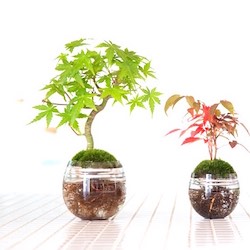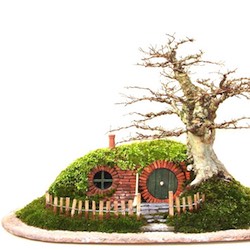Suiseki (also called viewing stones) are often placed on delicate wooden stands or trays, called daizas and dobans, respectively. The wooden stands serve to display the stones and create an image of harmony. The stones are naturally occurring and unshaped.
Literally translated 'Suiseki' means waterstone, the stones often represent mountains, waterfalls and other natural scenes. The art of Suiseki involves the collection process, preparation of the stone (though not altering their shape or appearance) and appreciation.
History of Suiseki stones
Suiseki originates from China (called “Gongshi”, or scholar's rocks) and to some extent Korea (called “Suseok”). The art of Suiseki was introduced in Japan by the Chinese Imperial court during the Asuka period (538-710AD). The art became more popular during the Kamakura period (1183-1333AD) as it gained acceptance with the Samurai ruling class. Stone appreciation was introduced in the west when they were displayed at early Bonsai exhibitions.
Suiseki stone classification
The classification and evaluation of Suiseki revolves around their shape, possible markings and subtlety of color.
Landscape Suiseki (Sansui keijo-seki): in the form of a mountain, island, waterfall, shore- or coastline, cave, canyon or a plateau.
Object stones (Keisho-seki): representing a person, animal, boat, house or bridge. Classification by surface
Celestial (Gensho-seki): with patterns resembling the moon, sun or stars.
Plant (Kigata-ishi): with patterns picturing flowers, fruits, grasses, forests or even Bonsai.
Weather (Tenko-seki): resembling rain, intense sunlight, lightning or snow.
Abstract (Chusho-seki): with surfaces similar to animal prints, tangled nets, etc.
Suiseki can be displayed on a shallow tray filled with sand or water, as part of a Tokonoma setting and/or on a wooden stand or table. At most Bonsai exhibitions the Suiseki have a separate display and judging.






